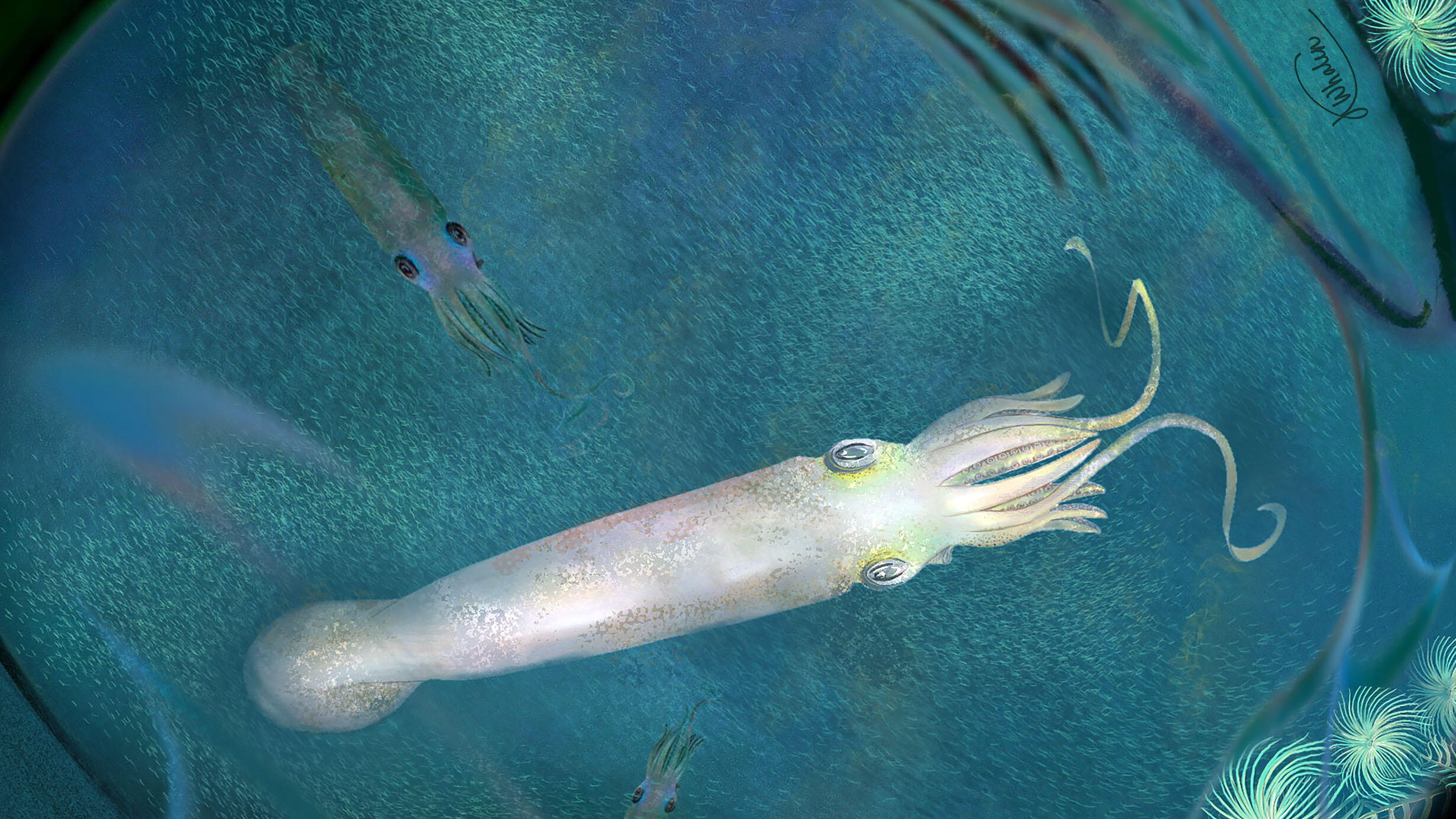 An artistic reconstruction of the newly described 328-million-year-old vampyropod.
An artistic reconstruction of the newly described 328-million-year-old vampyropod.© Katie Whalen
Octopuses are well-known for their eight arms, but new work led by Museum researchers supports the idea that this famous cephalopod’s oldest ancestors likely had two more appendages.
The study, published today in the journal Nature Communications, describes a new species of vampyropod—the group that includes octopuses and vampire squid—based on a 328-million-year-old fossil with 10 sucker-laden arms.
“This is the first and only known vampyropod to possess 10 functional appendages,” said Christopher Whalen, a postdoctoral researcher in the Museum’s Division of Paleontology and a National Science Foundation postdoctoral fellow in Yale’s Department of Earth & Planetary Sciences, who is the lead author on a study detailing these findings.
Because vampyropods have soft bodies, they do not typically make good fossils. But the new study is based on an exceptionally well-preserved vampire-squid-like fossil from the collections of the Royal Ontario Museum (ROM) that was discovered in what is now Montana and donated to ROM in 1988.
S. Thurston/© AMNH
Whalen and coauthor Neil Landman, a curator emeritus in the Museum’s Division of Paleontology, determined that the specimen is a completely new genus and species that dates to about 328 million years old—making it the oldest known vampyropod and extending the fossil record of the group by about 82 million years.
They also describe its 10 arms, two of which appear to have been elongated relative to the others.
“The arm count is one of the defining characteristics separating the 10-armed squid and cuttlefish line (Decabrachia) from the eight-armed octopus and vampire squid line (Vampyropoda). We have long understood that octopuses achieve the eight-arm count through elimination of the two filaments of vampire squid, and that these filaments are vestigial arms,” said Whalen. “However, all previously reported fossil vampyropods preserving the appendages only have 8 arms, so this fossil is arguably the first confirmation of the idea that all cephalopods ancestrally possessed 10 arms.”
Find out all about cephalopods in this video with Museum conservation biologist Samantha Cheng.
The fossil was given the name Syllipsimopodi bideni. The genus name is derived from the Greek word “syllípsimos” for “prehensile” and “pódi” for “foot”—because this is the oldest known cephalopod to develop suckers, allowing the arms, which are modifications of the molluscan foot, to better grasp prey and other objects.
The species name is to honor the recently inaugurated (at the time of paper submission) 46th President of the United States, Joseph R. Biden.
“Syllipsimopodi may have filled a niche more similar to extant squids, a midlevel aquatic predator,” said Landman. “It is not inconceivable that it might have used its sucker-laden arms to pry small ammonoids out of their shells or ventured more inshore to prey on brachiopods, bivalves, or other shelled marine animals.”